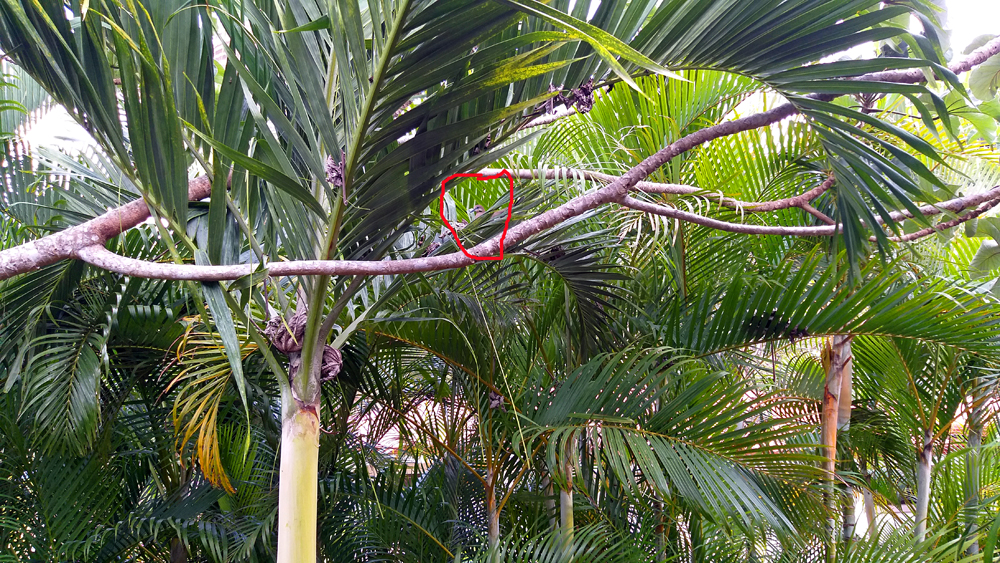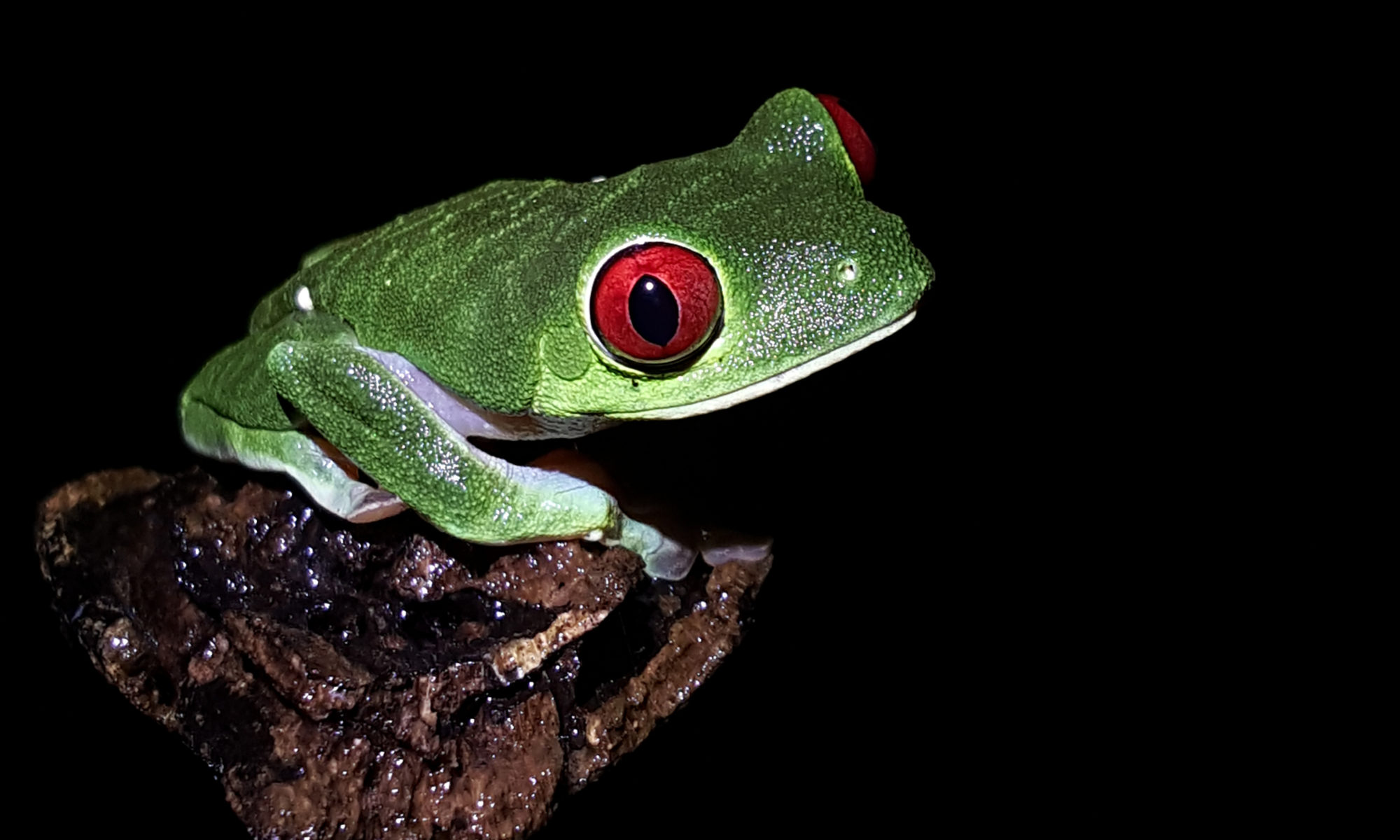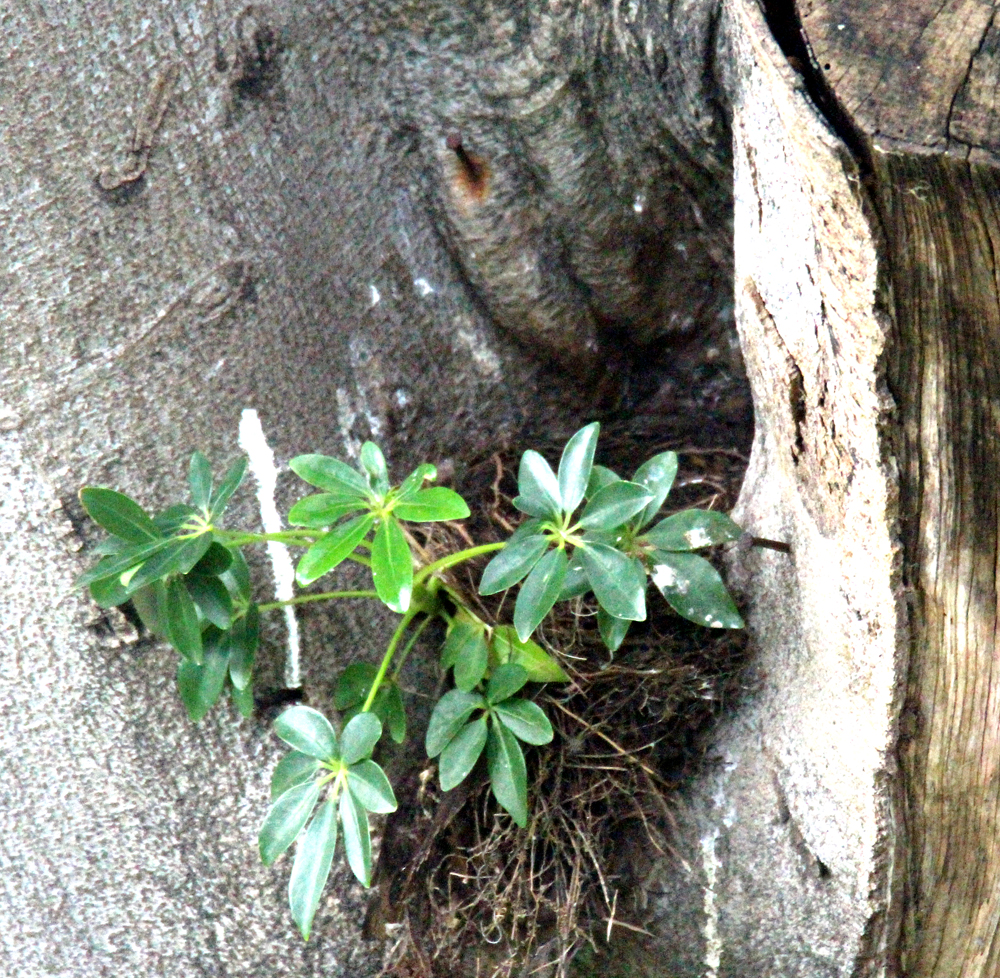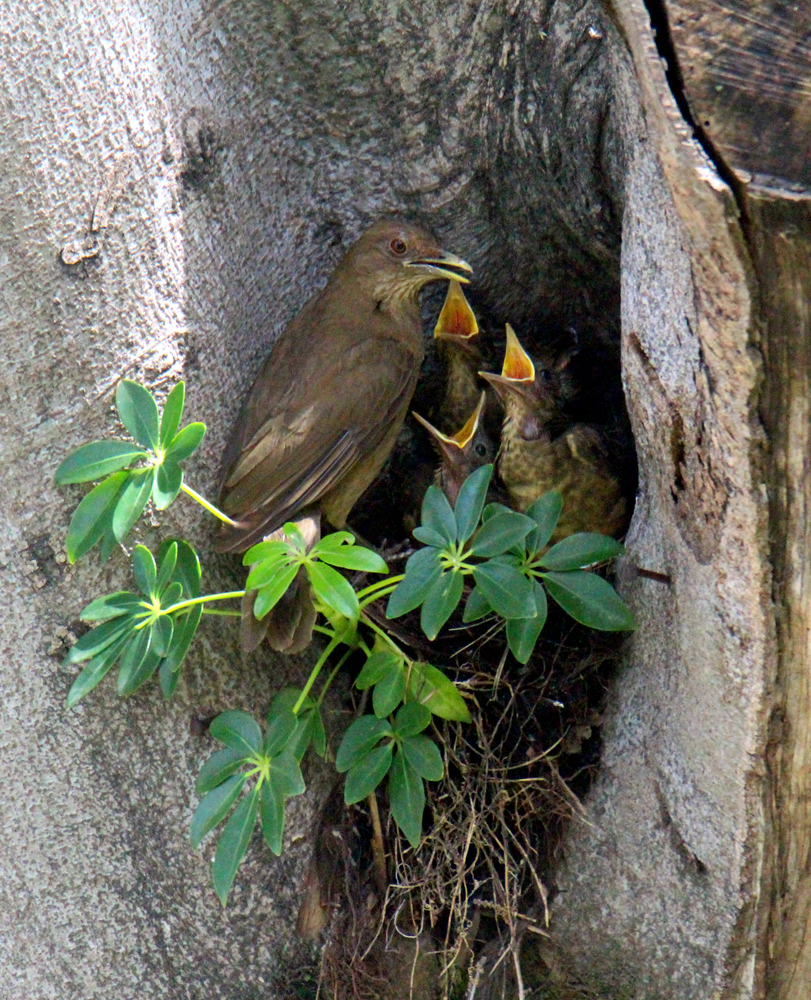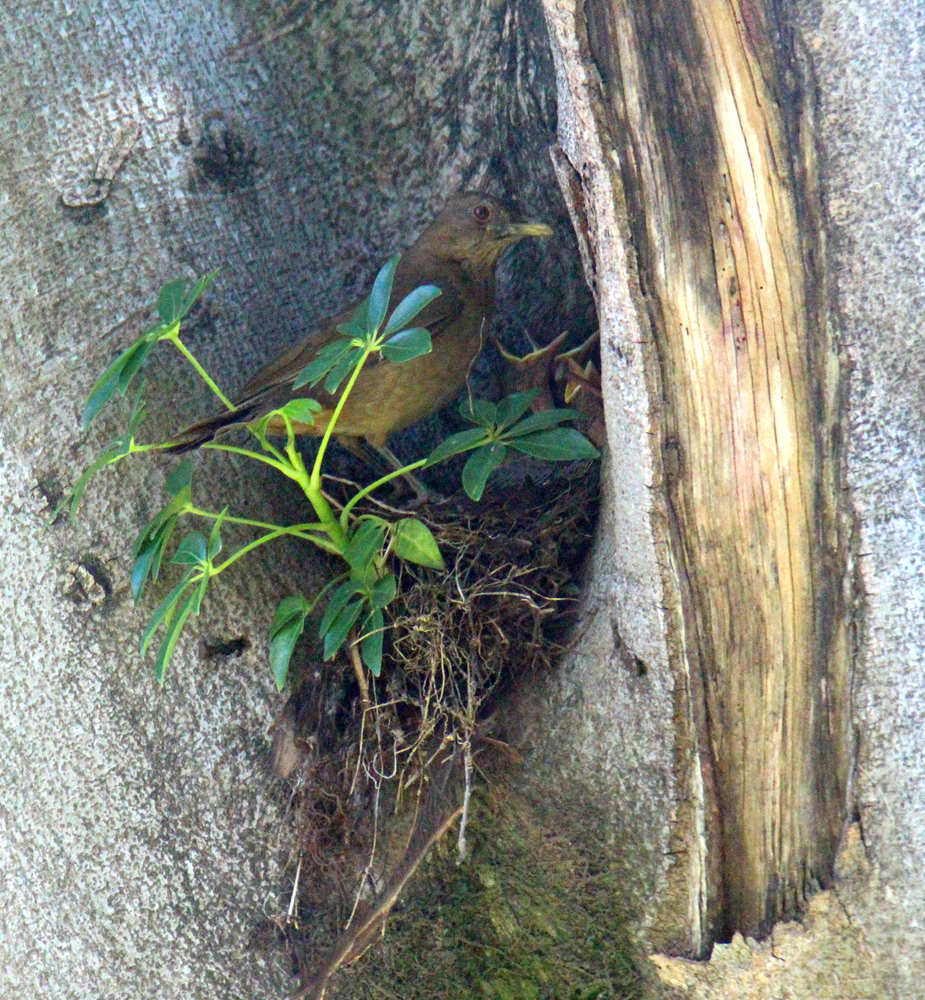We’ve had strong winds today meaning the Dove nest I introduced the other day is being tested. She has not left the nest for at least 2 days now, implying that she has laid her egg(s). In the wide photo you can tell that the nest, circled in red, is in a palm frond that is partly held secure by the fork of the Cecropia Tree (did the Doves figure that out?) and behind that frond is a row of bamboo palms blocking some of the wind. So the nest might make it, especially if she doesn’t leave it or leave it much when the wind is blowing. I don’t know if the male will bring her food; I haven’t seen him around. I will be pleasantly surprised if this nest continues to survive and we see baby doves! 🙂 Remember that earlier an Inca Dove nest did not survive a palm frond location, but it was more in the open with no shelter or support like this Cecropia Tree fork of limbs. Time will tell.
